How Do I Get to Upper Dolpo? A Complete Guide to Your Himalayan Adventure
If you're dreaming of an adventure that's far from the beaten path, Upper Dolpo in Nepal is the place to go. Nestled in the remote western region of the Himalayas, Upper Dolpo is a haven for trekkers seeking solitude, stunning landscapes, and an authentic experience of the ancient Tibetan culture. But you might be wondering, "How do I get to Upper Dolpo?" Let's dive into everything you need to know about getting there, planning your trek, and what to expect along the way.
What Makes Upper Dolpo So Special?
Before we jump into the logistics, it's worth understanding what makes Upper Dolpo so special. This region is one of the last enclaves of pure Tibetan culture, largely untouched by the outside world. It’s a place where time seems to stand still, where ancient monasteries cling to mountainsides, and where the traditions of the past are still very much alive.
Upper Dolpo's landscapes are equally breathtaking. Imagine vast arid valleys, towering peaks, turquoise lakes, and isolated villages that seem to be carved out of the mountains themselves. It's no wonder this area has captured the imagination of many adventurers.
Getting to Upper Dolpo: The Journey Begins
Now, onto the main question: how do you get to Upper Dolpo? Reaching this remote region is no small feat, and that’s part of what makes the journey so rewarding. Here’s a step-by-step guide on how to get there.
Step 1: Arrive in Kathmandu
Your journey to Upper Dolpo begins in Kathmandu, Nepal’s vibrant capital. This bustling city is where you’ll sort out your permits, gather supplies, and meet with your trekking group or guide. Make sure you have a few days in Kathmandu to get everything in order before heading out.
Permits You’ll Need:
Restricted Area Permit: Upper Dolpo is a restricted area, which means you’ll need a special permit to trek here. This permit is more expensive than regular trekking permits and must be arranged through a registered trekking agency.
Trekking Information Management System (TIMS) Card: This is a standard requirement for all trekkers in Nepal.
Step 2: Fly to Nepalgunj
After Kathmandu, your next stop is Nepalgunj, a town in the southwestern part of Nepal near the Indian border. Nepalgunj is the gateway to the remote regions of western Nepal. The flight from Kathmandu to Nepalgunj is short, around an hour, but it’s crucial as it gets you closer to the mountains.
Step 3: Fly to Juphal
From Nepalgunj, you’ll take another flight to Juphal, a small airstrip in the Dolpo region. This flight is an adventure in itself, with stunning views of the Himalayas. Juphal is where your trek begins. There’s no road access to Upper Dolpo, so this flight is the only way to reach the region quickly.
Expert Advice: Flights to Juphal can be delayed or canceled due to weather conditions, so it’s wise to have some flexibility in your schedule.
The Trekking Route: Step-by-Step to Upper Dolpo | Itinerary
Once you’ve landed in Juphal, it’s time to lace up your hiking boots and start trekking. The journey to Upper Dolpo is challenging, but the rewards are well worth it. Here’s a typical Upper Dolpo itinerary:
Day 1: Juphal to Dunai
Distance: 3-4 hours trekking
Elevation: 2,850 meters
Your trek begins with a walk from Juphal to Dunai, the district headquarters of Dolpa. This is a relatively easy day, giving you time to adjust to the altitude and get into the pattern of trekking.
Day 2-3: Dunai to Chhepka to Renje
Distance: 6-7 hours trekking each day
Elevation: 3,040 meters
The trail takes you through beautiful forests and along the banks of the Phoksundo River. You’ll pass through small villages, where you can get a glimpse of local life. These days are more about getting deeper into the remote wilderness.
Day 4: Renje to Ringmo and Phoksundo Lake
Distance: 5-6 hours trekking
Elevation: 3,600 meters
One of the highlights of the trek is reaching Phoksundo Lake, a stunning turquoise lake surrounded by mountains. The village of Ringmo, located near the lake is a perfect spot to rest and acclimatize.
Day 5-6: Rest and Acclimatization at Phoksundo Lake
Acclimatization is key to a successful trek, so take these days to explore the area around Phoksundo Lake. You can visit the nearby monastery or simply relax and take in the views.
Day 7-8: Phoksundo Lake to Shey Gompa via Kang La Pass
Distance: 8-9 hours trekking
Elevation: 5,150 meters (Kang La Pass)
This is one of the most challenging parts of the trek, crossing the high Kang La Pass. The climb is steep but once you reach the top, the views are unforgettable. You’ll then descend to Shey Gompa, an ancient monastery and a major pilgrimage site.
Day 9-10: Shey Gompa to Saldang
Distance: 6-7 hours trekking each day
Elevation: 3,903 meters
From Shey Gompa, the trail takes you through the heart of Upper Dolpo. You’ll pass through high-altitude deserts and small, isolated villages. Saldang is one of the largest villages in the region and a great place to learn about the local culture.
Day 11-14: Saldang to Juphal
Distance: 6-7 hours trekking each day
The return journey takes you back to Juphal, following a different route that offers new scenery and experiences. By the time you reach Juphal, you’ll have completed an incredible journey through one of the most remote regions in the world.
[H2] How Much Upper Dolpo Cost?
Trekking in Upper Dolpo is a significant investment, both in time and money. So, let’s break down the Upper Dolpo cost:
Permits and Fees:
- Restricted Area Permit: Approximately $500 per person for a 10-day trek.
- TIMS Card: $10-$20 per person.
Flights:
- Kathmandu to Nepalgunj: Around $150 one way.
- Nepalgunj to Juphal: Around $180 one way.
Guide and Porter:
- Guide: $25-$30 per day.
- Porter: $20-$25 per day.
Accommodation and Food:
- Lodges/Teahouses: $5-$10 per night.
- Meals: $20-$30 per day.
Total Cost:
For a 20-day trek, you’re looking at around $3,000 to $4,000 per person, depending on the services you choose.
What to Expect: The Dolpo Experience
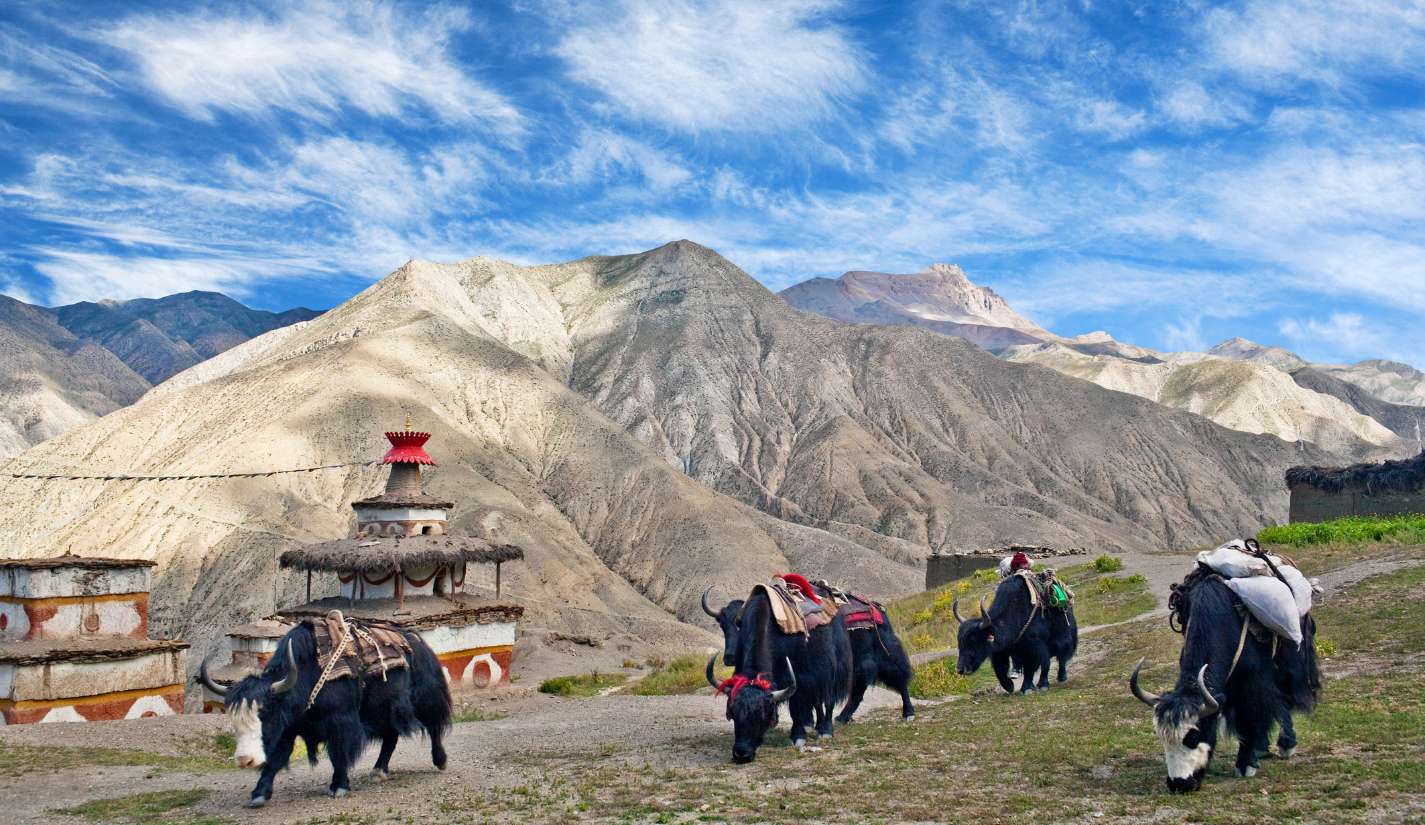
Trekking in Upper Dolpo is not for the faint of heart. The trails are rugged, the altitude is high, and the region is remote. But if you’re up for the challenge, you’ll be rewarded with an experience unlike any other.
The People
The people of Upper Dolpo are of Tibetan descent, and their culture is closely tied to Tibetan Buddhism. You’ll see prayer flags fluttering in the wind, visit ancient monasteries, and witness traditional festivals if your timing is right.
The Wildlife
Upper Dolpo is part of the Shey Phoksundo National Park, a protected area that’s home to rare wildlife, including the elusive snow leopard. Keep your eyes peeled for blue sheep, Himalayan griffons, and other wildlife as you trek through the region.
The Culture
Upper Dolpo’s culture is deeply spiritual, with a strong emphasis on Buddhism. You’ll have the opportunity to visit several monasteries, including Shey Gompa, which is considered the spiritual heart of Dolpo.
Best Time to Trek to Upper Dolpo
The best time for trekking in Dolpo is during the spring (April-May) and autumn (September-October) seasons. During these months, the weather is stable, and the skies are clear, offering the best conditions for trekking.
Best Seasons for Upper Dolpo Trek
Prepare for Your Trek
Trekking in Upper Dolpo requires a good level of fitness and preparation. Here are some tips to help you get ready:
- Physical Preparation: Start training several months before your trek. Focus on cardiovascular fitness, strength training, and hiking with a backpack.
- Gear: Invest in good quality gear, including a warm sleeping bag, sturdy trekking boots, and layered clothing.
- Health: Consult with your doctor before the trek, especially if you have any pre-existing conditions. Make sure you’re up to date on vaccinations and consider carrying altitude sickness medication.
Read Blog: How Difficult is Upper Dolpo Trek
Final Thought: Upper Dolpo Awaits You!
So, how do you get to Upper Dolpo? It’s a journey that requires careful planning, a sense of adventure, and a willingness to step off the beaten path. But once you’re there, you’ll discover a world that few have seen, where the mountains are tall, the skies are wide, and the culture is as rich as the landscapes.
Trekking to Upper Dolpo is more than just a hike; it’s a journey into the heart of the Himalayas, where every step brings you closer to the land, the people, and the stories that make this region so unique. If you're looking for a truly immersive experience, consider joining a Dolpo Caravan, which offers a guided trek with a local perspective, adding depth and authenticity to your adventure. If you’re ready for the adventure of a lifetime, Upper Dolpo is waiting for you.
FAQs
How difficult is the trek to Upper Dolpo?
The trek to Upper Dolpo is considered challenging due to its remote location, high altitudes, and rugged terrain. Trekkers should be in good physical condition and have some prior trekking experience. The trek involves several days of walking, often at high altitudes, which can be physically demanding.
How long does it take to complete the Upper Dolpo trek?
The trek typically takes about 25-30 days, depending on the specific route and pace. This includes time for acclimatization, exploration, and the return journey. Some itineraries might be shorter or longer, but 25 days is a common duration.
Can I trek to Upper Dolpo independently, or do I need a guide?
Due to the restricted nature of Upper Dolpo, trekking independently is not allowed. You must trek with a licensed guide and be part of a group organized by a registered trekking agency. This rule helps preserve the area and ensures the safety of trekkers.
What is the best time of year to trek to Upper Dolpo?
The best time to trek to Upper Dolpo is during the spring (April-May) and autumn (September-October) seasons. These months offer comfortable temperatures, stable weather and clear skies. Monsoon season (June-August) and winter season (December-February) are not recommended.
How much does it cost to trek to Upper Dolpo?
The cost of trekking to Upper Dolpo can range from $3,000 to $4,000 per person, depending on various factors such as the length of the trek, the level of service, and the number of people in your group. This cost typically includes permits, flights, guide and porter fees, accommodation, and meals.
What kind of accommodation is available in Upper Dolpo?
Accommodation in Upper Dolpo is basic. You’ll mostly stay in teahouses or lodges, which offer simple rooms and shared facilities. In some remote areas, camping might be necessary. The focus here is more on the experience than luxury, so be prepared for modest living conditions.
Is altitude sickness a concern on the Upper Dolpo trek?
Yes, altitude sickness is a concern due to the high elevations reached during the trek, with some passes exceeding 5,000 meters. It’s essential to acclimatize properly, stay hydrated, and be aware of the symptoms of altitude sickness. If symptoms persist, descending to a lower altitude is crucial.
Do I need travel insurance for trekking in Upper Dolpo?
Actually, it is strongly advised to get travel insurance when walking in the Upper Dolpo. Make sure that emergency evacuation, medical treatment, and high-altitude trekking are all covered by your coverage. Having trustworthy insurance is crucial for your safety and comfort of mind, especially considering how remote the expedition is.
What kind of food can I expect during the trek?
Food options in Upper Dolpo are limited but sufficient. Teahouses typically offer simple meals such as dal bhat (rice and lentils), noodles, potatoes, and sometimes eggs or meat. It's advisable to bring some high-energy snacks like nuts or protein bars for extra sustenance during the trek.
Can I charge my electronic devices during the trek?
Charging facilities are limited in Upper Dolpo, especially in remote areas. Some teahouses might offer charging for a fee, but it's not always reliable. It’s a good idea to bring extra batteries or a portable solar charger if you need to keep your devices powered.
What should I pack for the Upper Dolpo trek?
Pack essentials like a warm sleeping bag, trekking poles, sturdy hiking boots, layered clothing, a good-quality backpack, first aid kit, water purification tablets, and personal hygiene items. It’s also important to carry cash, as ATMs are nonexistent in this remote region.
How safe is trekking in Upper Dolpo?
In general, trekking in Upper Dolpo is safe, especially when done so with a certified guide who is familiar with the area. However, there are not many hospitals or rescue services in the area due to its remoteness. It is crucial to hike with a reliable organization and be ready for the difficulties that come with hiking at high altitudes.
How do I get a Restricted Area Permit for Upper Dolpo?
Only authorized trekking agencies in Nepal are able to provide the Upper Dolpo Restricted Area Permit. You are unable to apply on your own. The organization will submit your application on your behalf; typically, it will need copies of your passport, visa, and identification.
What cultural norms should I be aware of in Upper Dolpo?
Upper Dolpo is a region deeply rooted in Tibetan Buddhism, so it’s important to respect local customs. Always ask for permission before photographing people, dress modestly, and be mindful when visiting monasteries. Avoid touching religious objects or stepping over them.

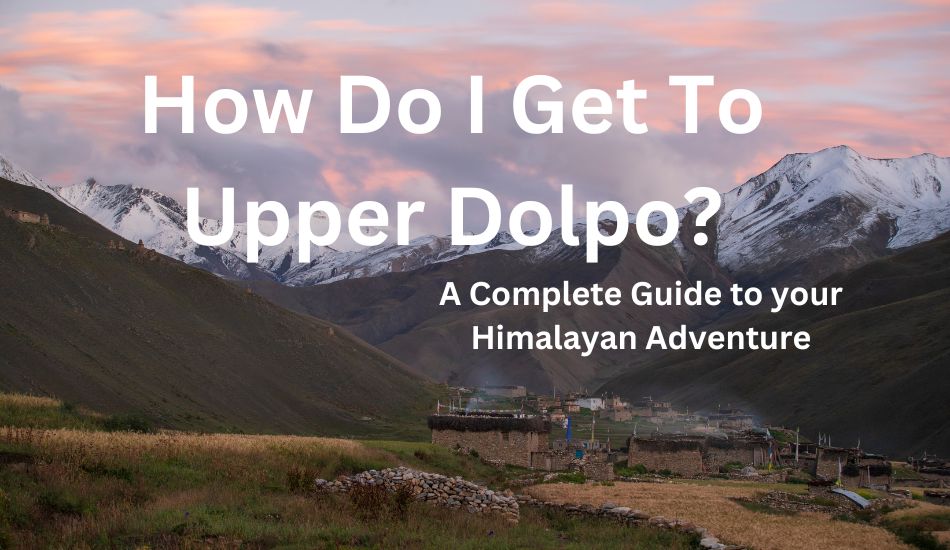
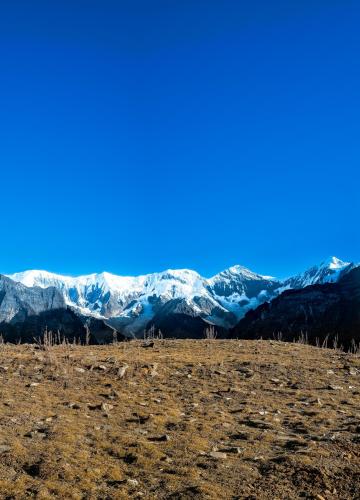
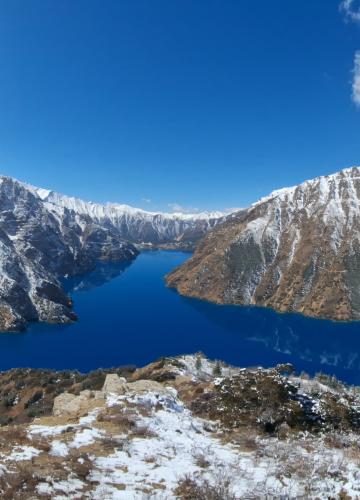
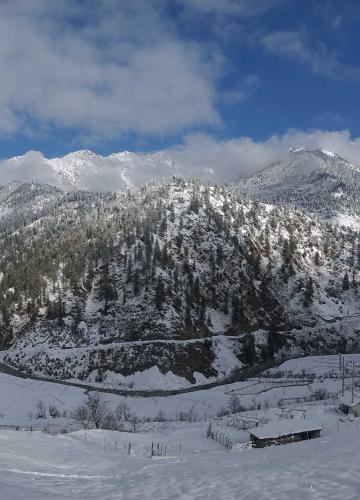
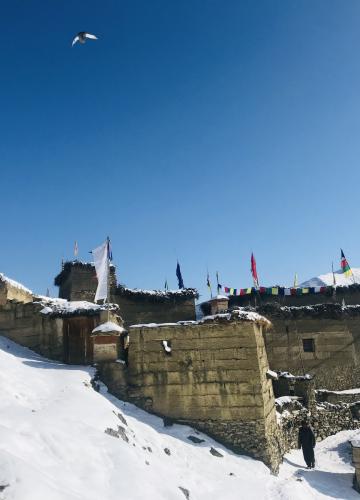
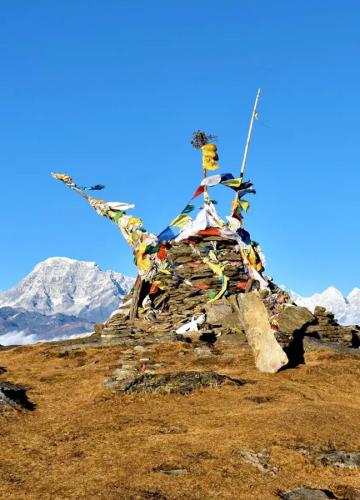

Leave Your Comment